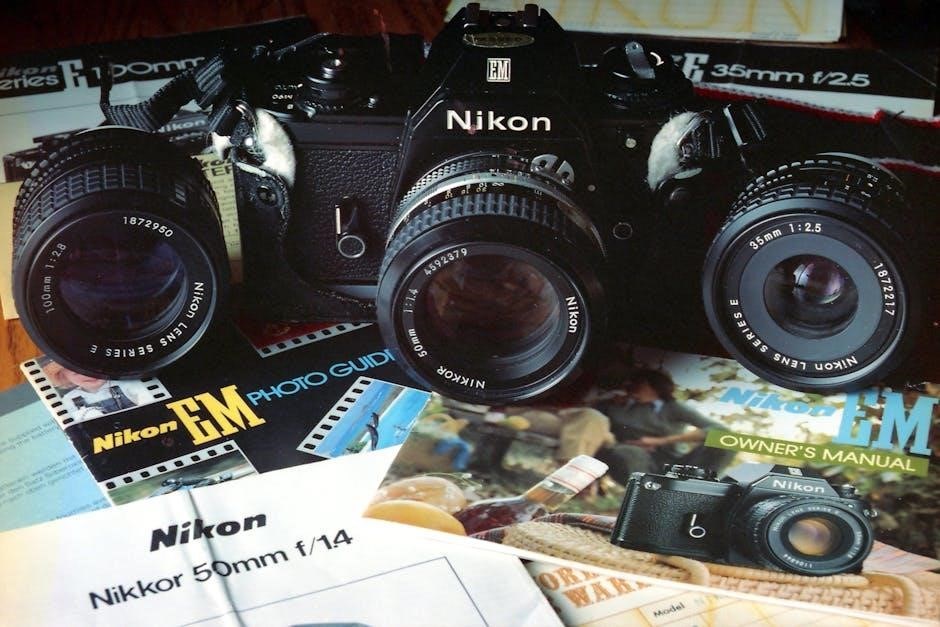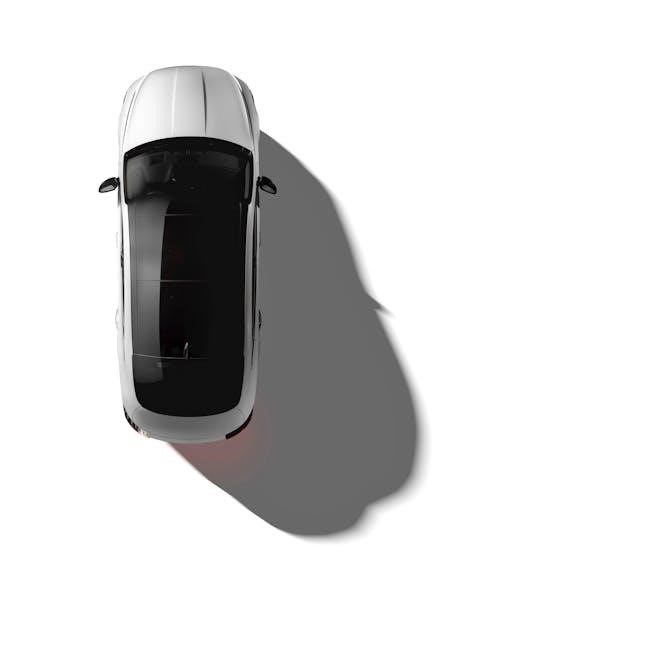The 2011 Hyundai Sonata Owners Manual is a comprehensive guide designed to help owners operate, maintain, and understand their vehicle effectively. It covers essential information about safety features, technical specifications, and maintenance requirements, ensuring optimal performance and longevity. Available for free download in PDF format, this manual is rated highly for its clarity and detailed instructions.
Overview of the Manual
The 2011 Hyundai Sonata Owners Manual is a detailed guide providing essential information for optimal vehicle operation and maintenance. It covers key aspects such as safety features, technical specifications, and troubleshooting tips. The manual is divided into sections, including interior and exterior features, maintenance schedules, and warranty details. Available in PDF format, it is accessible for free download, offering clear instructions for both new and experienced owners. With a focus on user-friendly language, the manual ensures drivers can make the most of their vehicle’s capabilities while adhering to recommended maintenance routines. Its comprehensive nature makes it an indispensable resource for Sonata owners seeking to understand and care for their car effectively.
How to Use the Manual Effectively
To use the 2011 Hyundai Sonata Owners Manual effectively, start by familiarizing yourself with its structure. The manual is organized into sections, each addressing specific aspects of the vehicle, such as safety features, maintenance, and troubleshooting. Begin with the table of contents to locate relevant information quickly. Pay attention to warnings, cautions, and notes highlighted throughout the guide, as they provide crucial safety and operational advice. For DIY maintenance, refer to the detailed instructions and diagrams to ensure proper procedures. Regularly review the manual to stay informed about best practices for vehicle care and performance. By following these steps, you can maximize the manual’s benefits and enhance your overall driving experience.

Vehicle Safety Features
The 2011 Hyundai Sonata is equipped with advanced safety features, including seat belts, airbags, and Electronic Stability Control, ensuring optimal protection for drivers and passengers.
Understanding Safety Precautions
Understanding safety precautions is crucial for safe vehicle operation. The manual highlights essential warnings and cautions to prevent accidents and ensure proper use of the vehicle. It emphasizes the importance of adhering to safety guidelines, such as wearing seat belts and avoiding dangerous driving practices. The manual also explains the meaning of warning symbols and signals, helping drivers recognize potential hazards. By following these precautions, owners can minimize risks and protect themselves and passengers. Regular checks of safety systems, like airbags and brakes, are also recommended to maintain vehicle reliability. Ignoring these precautions could lead to serious consequences, making it vital to review and understand this section thoroughly.
Driver Assistance Technologies
The 2011 Hyundai Sonata features advanced driver assistance technologies designed to enhance safety and convenience. These include systems like Electronic Stability Control (ESC) and Anti-lock Braking System (ABS), which improve vehicle stability and control during challenging driving conditions. The manual provides detailed explanations of these technologies, allowing drivers to understand and utilize them effectively. Additionally, features such as traction control and brake assist are highlighted, offering drivers peace of mind while on the road. The manual also emphasizes proper operation and maintenance of these systems to ensure they function optimally. By familiarizing themselves with these technologies, drivers can maximize their driving experience and safety.
Seat Belt and Airbag Information
The 2011 Hyundai Sonata Owners Manual emphasizes the importance of seat belts and airbags for passenger safety. It provides detailed instructions on proper seat belt usage, including correct positioning and tightening. The manual also explains the operation of the airbag system, including locations of airbags and precautions to avoid injury. Drivers are warned not to install rear-facing child seats in front of active airbags and to ensure all passengers wear seat belts. The manual highlights the consequences of not following these guidelines, stressing that failure to do so can result in serious injury or death. Proper use of these safety features is essential for maximizing protection in the event of an accident.

Maintenance and Servicing
The 2011 Hyundai Sonata Owners Manual outlines essential maintenance schedules, service intervals, and DIY tips to ensure optimal vehicle performance and longevity. Regular servicing is crucial for reliability.
Scheduled Maintenance Requirements
The 2011 Hyundai Sonata Owners Manual emphasizes the importance of adhering to scheduled maintenance to ensure the vehicle operates efficiently. Regular oil changes, tire rotations, and inspections are recommended at specific intervals. The manual provides a detailed service schedule, outlining tasks to be performed at 15,000, 30,000, and 60,000 miles. It also highlights the need for brake system checks, air filter replacements, and battery maintenance. Following these guidelines helps prevent potential issues and extends the lifespan of the vehicle. Proper documentation of services is also encouraged to maintain warranty validity and resale value.
DIY Maintenance Tips

The 2011 Hyundai Sonata Owners Manual provides practical DIY maintenance tips to help owners keep their vehicle in top condition. Regular oil changes, tire pressure checks, and air filter inspections are simple tasks that can be done at home. The manual recommends checking the battery terminals for corrosion and ensuring all fluid levels are within the recommended range. Additionally, owners can perform basic inspections of belts and hoses for signs of wear. These DIY tasks not only save money but also help prevent unexpected repairs. Always consult the manual for specific guidelines and safety precautions before starting any maintenance work to ensure everything is done correctly.
Common Maintenance Issues and Solutions
Common maintenance issues for the 2011 Hyundai Sonata include oil leaks from the engine, worn-out timing belts, and alternator problems. Regular inspections can help identify these issues early. For oil leaks, check the valve cover gasket and oil pan gasket for signs of wear. Timing belts should be replaced every 60,000 to 90,000 miles to prevent engine damage. Alternator issues often arise from worn-out serpentine belts or corroded connections. Cleaning battery terminals and ensuring proper belt tension can resolve many electrical problems. Addressing these issues promptly helps maintain the vehicle’s performance and prevents costly repairs. Always refer to the manual for specific instructions and recommendations.

Vehicle Features and Controls
The 2011 Hyundai Sonata features advanced technology, including a user-friendly infotainment system, comfortable seating, and intuitive controls. The manual provides detailed guidance on utilizing these features effectively.
Interior Features and Functions
The 2011 Hyundai Sonata boasts a well-designed interior with premium features for comfort and convenience. The manual details the operation of the adjustable seating, dual-zone climate control, and advanced infotainment system. It also explains the use of power windows, cruise control, and steering wheel-mounted audio controls. Additionally, the manual provides guidance on utilizing the Bluetooth connectivity and USB ports for seamless entertainment and communication. Understanding these features enhances the driving experience, ensuring optimal comfort and functionality for both drivers and passengers.
Exterior Components and Accessories
The 2011 Hyundai Sonata features a sleek and aerodynamic exterior design, with components like projector headlights, fog lights, and a chrome front grille. The manual details the proper care and maintenance of these elements. It also covers the function and adjustment of exterior mirrors, alloy wheels, and the rear bumper. Additionally, the manual provides guidance on accessories such as roof racks and spoilers, ensuring owners can customize and maintain their vehicle’s exterior effectively. Understanding these components helps preserve the car’s appearance and functionality, contributing to a safer and more enjoyable driving experience.
Infotainment and Navigation Systems

The 2011 Hyundai Sonata offers an advanced infotainment system, featuring a high-resolution touchscreen display, Bluetooth connectivity, and USB ports for seamless music and phone integration. The manual provides detailed instructions on operating the audio system, setting up voice commands, and navigating through menus. It also explains how to use the optional navigation system, including entering destinations and understanding map displays. Additionally, the manual covers troubleshooting common issues like connectivity problems or screen responsiveness. By following the guide, owners can maximize their infotainment experience, ensuring convenient and enjoyable use of the system’s features while driving.

Troubleshooting Common Issues
The manual helps identify and resolve issues like warning lights, connectivity problems, and performance concerns. It guides owners through diagnostic steps and practical solutions to ensure optimal vehicle function.
Identifying and Addressing Warning Lights
The 2011 Hyundai Sonata Owners Manual provides detailed explanations of dashboard warning lights, ensuring drivers understand their meanings and appropriate actions. From the brake system warning to the tire pressure monitor, the manual helps owners identify issues promptly. It also offers step-by-step guidance on resolving common problems and when to seek professional assistance. This section is crucial for maintaining safety and preventing potential damage to the vehicle. By referencing the manual, drivers can address alerts confidently, ensuring their Sonata runs smoothly and efficiently. The manual is available for free download, making it easily accessible for all owners to diagnose and resolve issues effectively.
Common Problems and Solutions
The 2011 Hyundai Sonata Owners Manual addresses frequent issues owners may encounter, such as engine performance, transmission smoothness, and electrical system malfunctions. For example, if the vehicle hesitates during acceleration, checking the fuel filter and spark plugs is recommended. If the transmission slips gears, consulting a certified technician is advised. Additionally, flickering dashboard lights may indicate a loose connection or faulty bulb, which can often be resolved with simple inspections. The manual provides clear, step-by-step solutions to help owners diagnose and fix these problems efficiently, ensuring their Sonata remains reliable and performs optimally. Regular maintenance, as outlined in the manual, can prevent many of these issues from arising.

Technical Specifications
The 2011 Hyundai Sonata features a wheelbase of 110.0 inches, curb weight of 3,251 lbs, and fuel tank capacity of 18.5 gallons. It offers a towing capacity of up to 1,000 lbs and provides ample passenger space of 103.8 cubic feet. The vehicle’s dimensions include a length of 189.8 inches, width of 72.2 inches, and height of 57.9 inches, ensuring a balanced blend of performance and comfort.
Engine and Performance Details
The 2011 Hyundai Sonata is powered by a 2.4-liter GDI (Gasoline Direct Injection) inline-4 cylinder engine, delivering 198 horsepower at 6,300 rpm and 184 lb-ft of torque at 4,250 rpm. This engine features Dual Continuously Variable Valve Timing (D-CVVT) for enhanced fuel efficiency and performance. The Sonata also offers a smooth-shifting 6-speed automatic transmission with SHIFTRONIC manual shift control, providing drivers with both convenience and sporty driving options. The fuel-efficient design achieves an EPA-estimated 22 mpg in the city and 35 mpg on the highway, making it a reliable choice for daily commuting and long road trips alike. The engine’s performance is further supported by advanced noise reduction technologies, ensuring a quiet and refined driving experience.
Transmission and Fuel Efficiency
The 2011 Hyundai Sonata features a smooth-shifting 6-speed automatic transmission with SHIFTRONIC manual shift control, offering drivers the flexibility to switch between automatic and manual modes for a more engaging driving experience. This advanced transmission system contributes to the vehicle’s excellent fuel efficiency, achieving an EPA-estimated 22 mpg in the city and 35 mpg on the highway. The Sonata’s fuel-efficient design makes it an economical choice for both daily commuting and long-distance travel. The combination of a responsive transmission and optimized fuel performance ensures a balanced blend of power and efficiency, catering to a wide range of driving preferences and conditions.
Brake and Suspension Systems
The 2011 Hyundai Sonata is equipped with a robust brake system featuring power-assisted four-wheel disc brakes with ABS (Anti-lock Braking System) for enhanced stopping power and control. The front brakes utilize larger discs for improved heat dissipation, while the rear brakes are designed for consistent performance. The suspension system includes a MacPherson strut front setup and a multi-link rear configuration, providing a balance of ride comfort and handling precision. This design minimizes body roll and ensures stability during cornering. The suspension also incorporates gas-filled shock absorbers for reduced vibration and improved road manners. Together, these systems contribute to the Sonata’s reputation for safety and driving refinement, ensuring a smooth and responsive driving experience under various conditions.

Warranty and Service Information
The 2011 Hyundai Sonata comes with a comprehensive warranty program, including a 5-year/60,000-mile basic warranty and a 10-year/100,000-mile powertrain warranty. Regular servicing is recommended to maintain optimal performance and warranty validity;
Understanding Your Vehicle Warranty
The 2011 Hyundai Sonata is backed by a comprehensive warranty program designed to protect your investment. The vehicle comes with a 5-year/60,000-mile basic warranty and an extended 10-year/100,000-mile powertrain warranty. These coverages ensure that repairs to the engine, transmission, and other critical components are addressed at no additional cost. Regular maintenance, as outlined in the manual, is essential to maintain warranty validity. Additionally, Hyundai offers roadside assistance and anti-perforation warranties for added peace of mind. Understanding the terms and conditions of your warranty ensures you can take full advantage of these protections. Proper documentation and adherence to the recommended service schedule are key to preserving your warranty benefits. Always refer to the manual for detailed coverage specifics and guidelines.
Service Interval Recommendations
The 2011 Hyundai Sonata Owners Manual outlines specific service intervals to ensure optimal vehicle performance and longevity. Routine maintenance, such as oil changes and tire rotations, is recommended at intervals of 5,000 to 7,500 miles. Additional services, including inspections of belts, hoses, and fluid levels, should be performed every 15,000 to 30,000 miles. Hyundai also provides guidelines for severe driving conditions, which may require more frequent servicing. Adhering to these recommendations helps maintain the vehicle’s efficiency, prevent potential issues, and uphold warranty coverage. Always consult the manual for detailed service schedules tailored to your driving habits and conditions. Regular maintenance is crucial for ensuring your Sonata runs smoothly and reliably over time.

Additional Resources
The 2011 Hyundai Sonata Owners Manual can be complemented with online resources, including Hyundai’s official website, forums, and PDF downloads, offering detailed guides and expert advice for owners.
Where to Find Repair Manuals and Guides
To access repair manuals and guides for the 2011 Hyundai Sonata, visit the official Hyundai website or trusted third-party sites like ManualsLib or ManualsOnline. These platforms offer free PDF downloads of the owners manual and technical specifications. Additionally, online marketplaces such as eBay provide used or OEM manuals for purchase. For DIY enthusiasts, forums like Hyundai Forums or Reddit communities often share valuable resources and repair guides. Ensure to verify the authenticity of any manual before use to maintain accuracy and safety.
Online Communities and Forums
Online communities and forums are invaluable resources for 2011 Hyundai Sonata owners seeking advice, troubleshooting, or modifications. Platforms like Hyundai Forums, Reddit, and Facebook Groups host active discussions where owners share experiences and solutions. These communities often provide access to DIY guides, technical insights, and real-time feedback from experienced users. Additionally, specialized automotive forums like Car Forums or AutoGuide offer detailed threads on maintenance, repairs, and upgrades specific to the Hyundai Sonata. For those looking for peer-reviewed advice or unofficial repair manuals, these platforms are a treasure trove of information. Engaging with these communities can enhance your understanding of your vehicle and help you address issues effectively.
Hyundai Dealer Network and Support
The Hyundai Dealer Network provides comprehensive support for 2011 Sonata owners, offering authorized service centers, genuine parts, and factory-trained technicians. Dealerships ensure proper maintenance, repairs, and warranty services, adhering to Hyundai’s standards. Visiting an authorized dealer guarantees access to specialized tools and expertise, ensuring your vehicle remains in optimal condition. Additionally, Hyundai’s customer support hotline and online resources provide assistance with questions or concerns. The dealer network also offers exclusive benefits, such as service reminders, maintenance plans, and access to the latest software updates. Whether for routine servicing or complex repairs, the Hyundai Dealer Network is a trusted resource for 2011 Sonata owners, ensuring reliability and peace of mind.






























